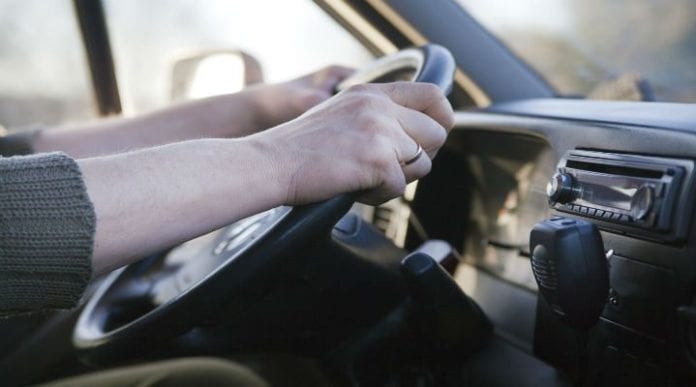 The automotive industry is being transformed by the “Internet of Things.” Having cars connected to the Internet is changing the way people drive, order and service their cars and how passengers enjoy the ride.
The automotive industry is being transformed by the “Internet of Things.” Having cars connected to the Internet is changing the way people drive, order and service their cars and how passengers enjoy the ride.
But IoT features aren’t a new idea for commercial fleet vehicles. In fact, telematics have been available in the automotive aftermarket, primarily for commercial vehicles, for decades, but only using aftermarket add-ons. “Telematics,” a word first coined by Simon Nora and Alain Minc in a 1978 report to the French government, combines “telecommunications” and “informatique” – the French word for computing. As these commercial fleet vehicles solutions increasingly began to share information bi-directionally via the Internet, they have become a part of the Internet of Things. Today, the “connected car” is rapidly transforming the consumer automotive experience as manufacturers compete to provide a wide array of factory- and dealer-installed IoT options.
These consumer-oriented IoT applications range from practical to entertaining. Audi, BMW and Mercedes demonstrated automated vehicles that assist with parking and lane changing at last year’s Consumer Electronics Show. AT&T partnered with Uber to enable passengers to watch college football games from tablets in the backseat. Signing up with General Motors, Audi and Ford, AT&T is aiming to hook up cars with Internet access to stream videos and games onto passengers’ mobile devices.
IoT is also being used to improve automotive manufacturing processes and customer service. Tesla achieved a first in the automotive industry when they pushed a safety software update to raise all Model S cars one inch for highway driving. The ability to update remotely saves Tesla the cost of bringing all the cars into the dealership and their customers the aggravation and time of bringing their cars to local service departments.
IoT can also be used to customize the production of cars and minimize new vehicle delivery times. Porsche tracks parts for vehicle options in real-time, allowing just-in-time changes to be incorporated smoothly. Buyers can change their car specifications at the last minute, enabling Porsche’s customers to conveniently customize their vehicle for the ultimate level of personalization.
Applications are emerging that plan to use data collected by connected cars. For example, traffic management systems can provide more accurate instructions to avoid traffic jams and accidents based on real-time data collected from connected cars. Automotive parts manufacturers can benefit from data about wear and tear to pre-order replacement parts and notify drivers before there are equipment failures.
Car sharing apps can use real-time location information to encourage car pools. There are even proposals for insurance systems that would adjust their rates based on geolocation and driving behavior of vehicles.
Road blocks for the connected car
There are a few things that need to happen before many of these connected car apps become commonplace. Standards need to be established to ensure that data can be rolled up and shared between systems. Policies need to define who owns data generated by vehicles, who should have access to private data and how connected cars should be protected from cyberattacks. Hacking into connected cars has become a major issue exemplified by Fiat Chrysler Automobiles announcing it will patch 1.4 million U.S. vehicles following the reveal of a hacking method by Wired.
Automotive systems that incorporate the IoT require the coordination of a variety of systems including a high-quality broadband network, integrated data and a core production system to analyze, report and act on the collected information.
New initiatives to collaborate
There are recent moves in the automotive industry to foster collaboration for connected cars and IoT. Volkswagen, Fiat, Renault and other European manufacturers have joined the Open Automotive Alliance. This Google-led community is developing a shared platform for the connected car in order to be able to integrate navigation data and infotainment.
Nokia is hosting a forum comprised of 16 auto industry companies where participants discuss a range of technical issues, including defining a format for transferring information, security, anonymity, and the accuracy and efficiency of data transmissions.
Assuming there are standards in place, there also need to be methods for developing connected car applications that are secure and reliable. Tools for developers that handle data integration with internal and external systems and regulatory authorities will be critical for rapid development of interrelated connected car applications. Middleware can provide the glue that holds this whole system together while reducing development costs and risks.
Once standards, policies and tools for collecting and integrating data are in place, the development of new solutions that revolutionize the driving experience will accelerate. The ride will be safer and more entertaining for its passengers, while delivering a whole new level of customer service for car owners.
Meanwhile, connected car apps with tie-ins to enterprise systems will continue to emerge for both consumers and commercial fleet vehicles. The ensuing competition for space on the dashboard, passenger entertainment systems, mounted mobile devices and untethered mobile devices will be fierce.
Editor’s Note: In an attempt to broaden our interaction with our readers we have created this Reader Forum for those with something meaningful to say to the wireless industry. We want to keep this as open as possible, but we maintain some editorial control to keep it free of commercials or attacks. Please send along submissions for this section to our editors at: [email protected].

